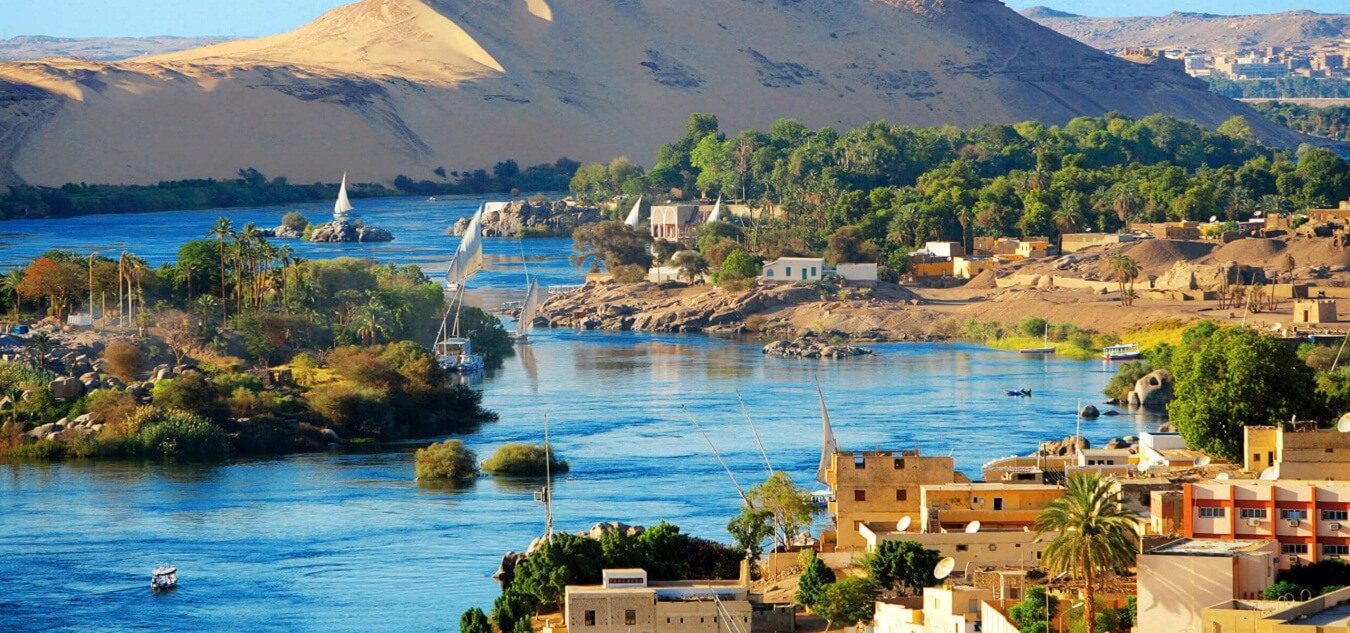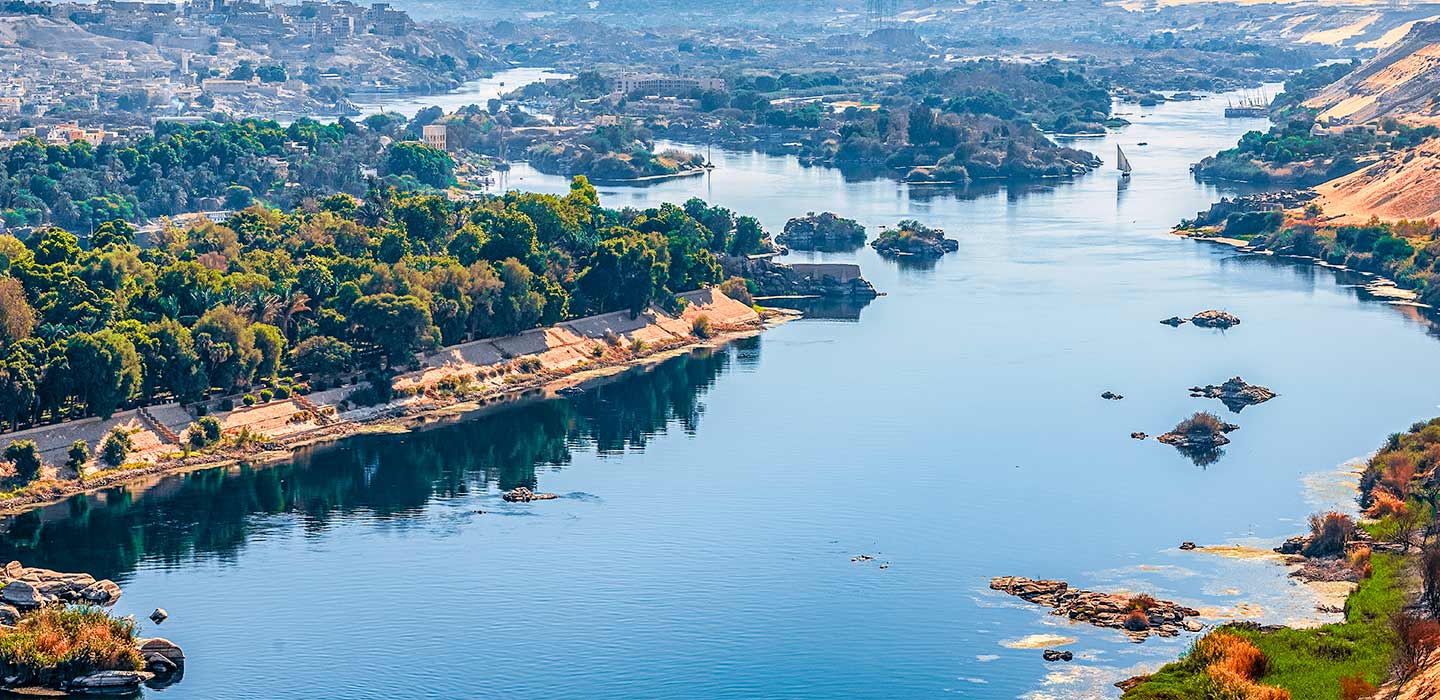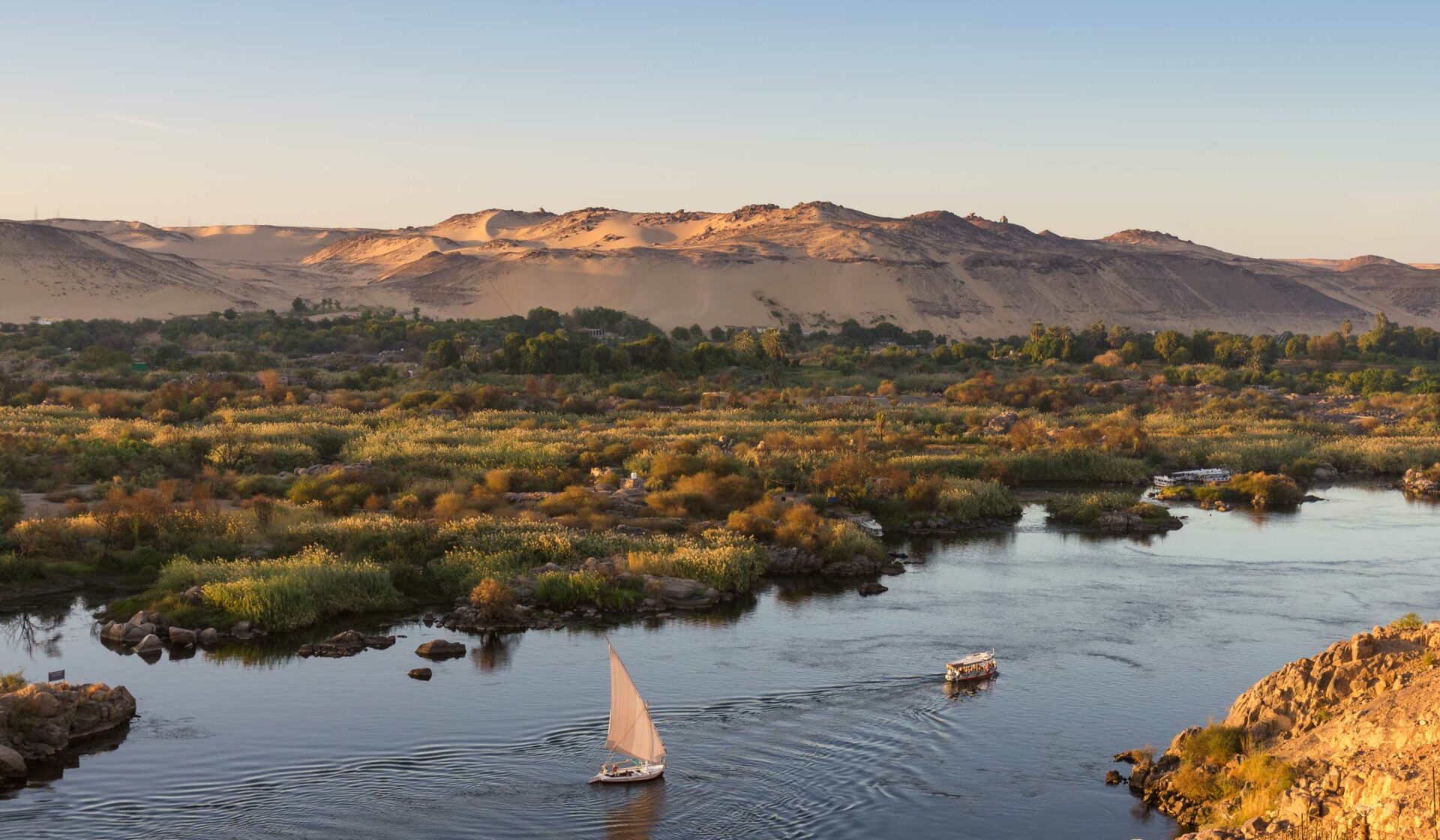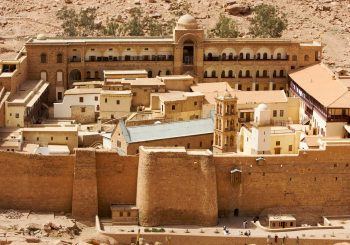The Nile River stands as a testament to the enduring significance of natural resources in shaping civilizations, and influencing ancient and modern Egypt profoundly. Its rich history and multifaceted impact on Egyptian society have made it a pivotal force in driving agriculture, enabling transportation, and inspiring mythological beliefs.
The Nile in Ancient Egypt: Agricultural Oasis
In an article by National Geographic, the Nile River served as a vital source of irrigation, transforming the arid lands surrounding it into fertile agricultural regions. The river’s annual flooding deposited nutrient-rich silt, allowing ancient Egyptians to cultivate crops such as wheat, barley, beans, and flax. This natural phenomenon not only ensured the prosperity of ancient farmers but also laid the foundation for Egypt’s economic and cultural development.
Moreover, for thousands of years, Egypt has depended on the Nile Delta for its food. The ancient Egyptians, clever in their methods, used irrigation to expand the land for crops and support a thriving population. Essential crops like beans, cotton, wheat, and flax were abundant and easily stored or traded. The delta, a perfect spot for the papyrus plant, served various purposes in ancient Egypt—producing cloth, boxes, and rope, with its most crucial role in making paper. Beyond self-sufficiency and trade, the river was used for bathing, drinking, recreation, and transportation. Transportation and Trade:
Transportation and Trade:
According to the insights of Patrick J. Kiger on the History Channel, the Nile’s role was a vital transportation route and a catalyst for trade networks, connecting Egypt to diverse African regions and even European markets. This trade contributed to Egypt’s economic prosperity and cultural exchange. In light of National Geographic’s article, there was an emphasis on ancient Egyptians glorification of the Nile, attributing mythological importance to Hapi, a deity symbolizing flooding and fertility. The annual flooding was considered a divine occurrence, signifying the cycle of life and sustaining the agricultural abundance upon which the civilization thrived.
 Modern Egypt: Continuing Significance
Modern Egypt: Continuing Significance
Even in modern times, the Nile remains Egypt’s agricultural lifeline. Based on National Geographic’s article, that canals divert water from the Nile to irrigate farmlands, supporting crop growth and sustaining farmers’ livelihoods. Moreover, The river’s proximity influences settlement patterns, with 95 percent of Egyptians residing within its vicinity. On the History Channel, Kiger highlights its continued significance as a crucial transportation route in cities like Cairo, where water taxis and ferries provide alternatives to congested roads. Additionally, dams like the Aswan High Dam contribute to Egypt’s energy needs through hydroelectric power.
 What One Needs to Know about This Ancient River
What One Needs to Know about This Ancient River
Did you know that the mighty Nile River embarks on a journey through nine African countries, carving a path of wonder and significance?
Originating in Tanzania, this colossal watercourse traverses Uganda, Ethiopia, South Sudan, Sudan, and finally, Egypt, where it reveals its grandeur as the renowned Nile Delta.
As it flows northward, it graces the landscapes of South Sudan and Sudan before embracing Egypt, where its majestic waters weave through Cairo and the coastal city of Alexandria by the Mediterranean Sea.
Embark on a journey along the banks of the Nile, and you’ll encounter a living tapestry of history. Most of the historical sites in Egypt stand proudly along the river’s edge, underscoring the profound cultural and historical significance of this flowing wonder.
For the ancient Egyptians, the Nile held a significance far beyond being a mere watercourse—it embodied a spiritual bridge linking life and death. Tombs meticulously aligned on the river’s western flank symbolized the realm of the departed, resonating with the sun’s descent in the west—a passage into the afterlife.
Conversely, the eastern banks represented the dawn of life, symbolizing birth and renewal. The Nile was not merely a waterway; it was a celestial pathway, intertwined with gods like Ra and Hapi, the deity of floods.

Dating back to prior to 3000 BC, the Nile is more than a river; it’s a chronicle of ancient civilization. A staggering fact is that over 50 percent of Egypt’s population calls the Nile Delta home.
This sprawling delta, situated in Northern Egypt, serves as the final destination for the Nile’s journey. Covering a length of 164 km and a width of 240 km, the Nile Delta is a fertile haven, enriched with fertilizers and silt. Its lush expanse supports a thriving population, making it a cornerstone of Egyptian life.
In the grand tapestry of nature, every river holds significance, yet the Nile transcends its aquatic boundaries. It weaves through time, connecting the past with the present, shaping cultures, and sustaining life. It is an enduring symbol of historical grandeur and contemporary cultural prominence.






Comments (0)